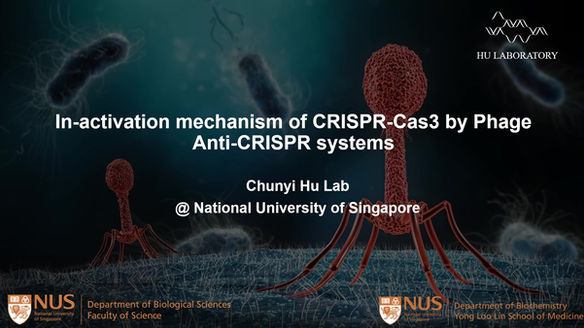
Welcome to The Hu Lab
CRISPORE (CRISPR in Singapore)

CRISPR Beyond and Seeking Low-cost Precision Medicine
















All Movies
All Movies


The Annotated Overview of CRISPR-Cas system

The inactivation mechanism of type I-C CRISPR-Cas3 system by Anti-CRISPR proteins

Story: Cas4-assisted Capturing Memories

The Deadliest Being on Planet Earth – The Bacteriophage

The CRISPR-Cas type III-E RNA-targeting effector complex gRAMP/Cas7-11 is associated with a caspase-like protein (TPR-CHAT/Csx29) to form Craspase (CRISPR-guided caspase). Here, we use cryo–electron microscopy snapshots of Craspase to explain its target RNA cleavage and protease activation mechanisms. Target-guide pairing extending into the 5′ region of the guide RNA displaces a gating loop in gRAMP, which triggers an extensive conformational relay that allosterically aligns the protease catalytic dyad and opens an amino acid side-chain–binding pocket. We further define Csx30 as the endogenous protein substrate that is site-specifically proteolyzed by RNA-activated Craspase. This protease activity is switched off by target RNA cleavage by gRAMP and is not activated by RNA targets containing a matching protospacer flanking sequence. We thus conclude that Craspase is a target RNA–activated protease with self-regulatory capacity.



Hu et al., Science 377, 1278–1285 (2022)

Block S2 Level 2, 14 Science Drive 4, Singapore 117557
hu_dbs@nus.edu.sg
+65-93983798
© 2022 by The Hu lab.

